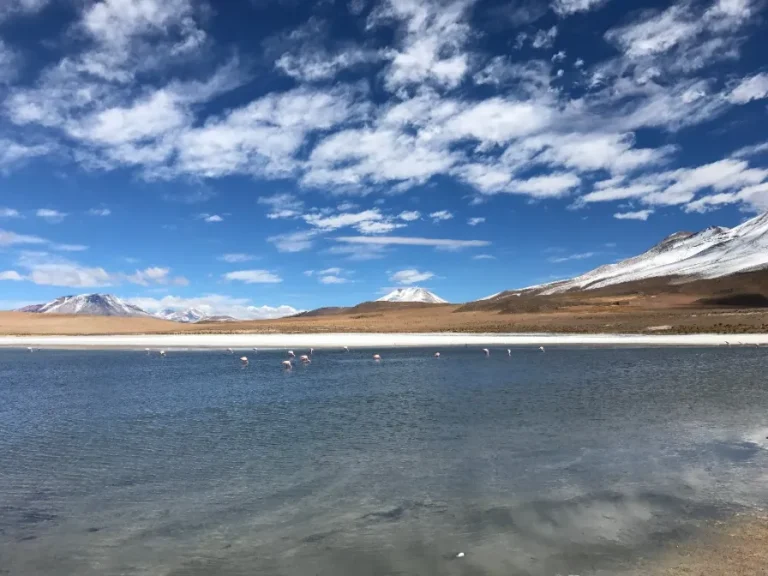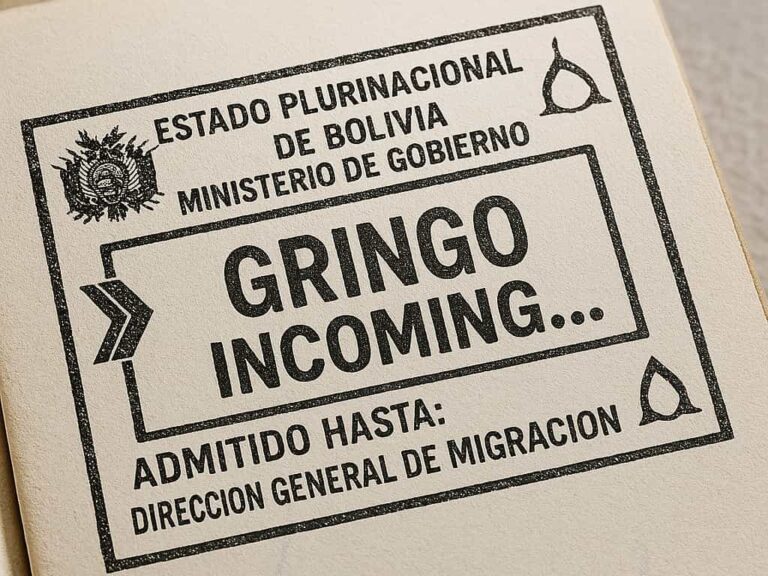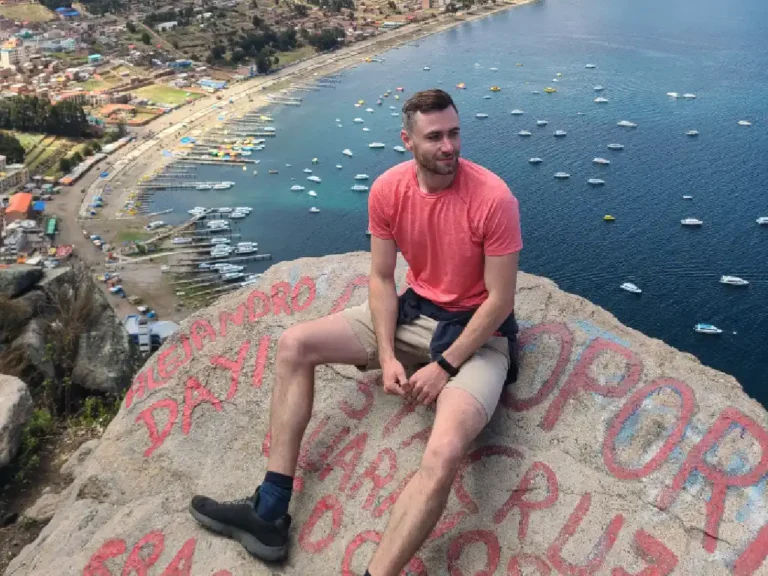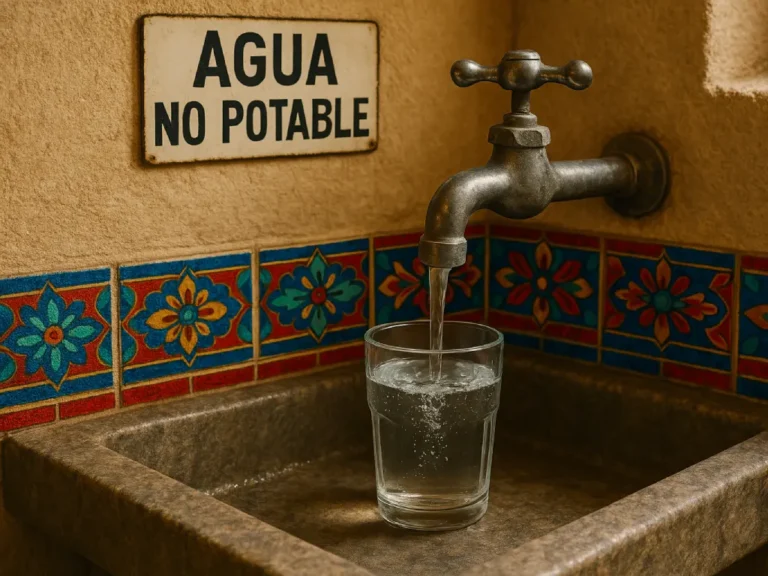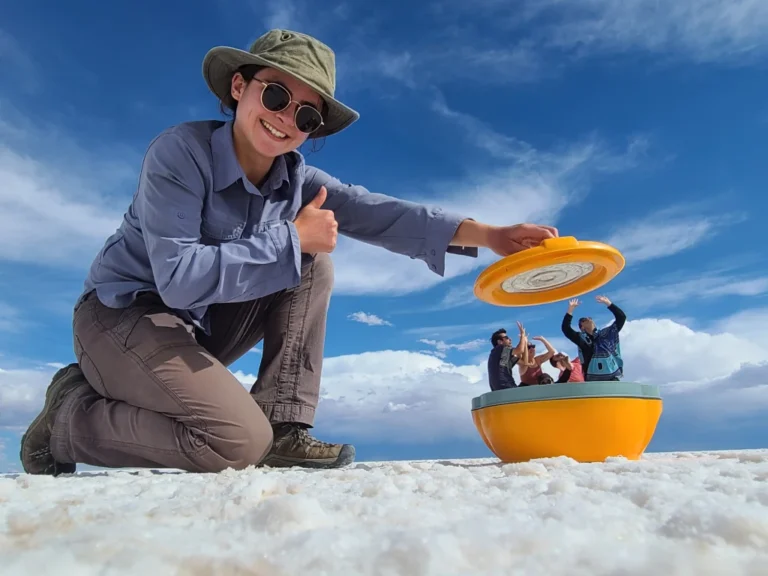Best Time of Year to Visit Bolivia: What I Learned Firsthand

If you’re anything like me, you’ve probably Googled “best time of year to visit Bolivia” and found about 47 different answers. Some swear by the dry season. Others hype up the wet season for that mirror-effect salt flat shot. So what’s the deal?
After spending time zigzagging across the country, from the high-altitude madness of La Paz to the dreamy stillness of the Salar de Uyuni, here’s what I actually learned about Bolivia’s seasons & when it really makes sense to go.
I had to get pretty creative with my Bolivia backpacking itinerary, so I’ve also summarised what I’d change next time here.
Quick Answer: May to October = Safer Bet
If you’re after blue skies, fewer rain delays & easier travel, then May to October is generally your best shout. That’s Bolivia’s dry season & it lines up nicely with UK summer hols too.
I’ve been before in October – very chilly at night in the highlands, but gorgeous during the day. Think dry air, bright skies & the kind of crispness that makes your travel pics look like they’ve been filtered (even though they haven’t – case in point above).
If you’re planning to pack your trip with stuff like mountain biking, trekking or road trips through the salt flats, this is the best window to hit the ground running. I covered all my favourite stops & wildest moments in my full guide to the best things to do in Bolivia – worth a scroll if you’re still piecing together your route.
Bolivia’s Climate Changes Wildly by Region
This bit took me by surprise – the country’s basically split into three climate zones:
- Altiplano (La Paz, Uyuni, Potosí) – cold & dry most of the year, especially at night. Winter here is June to August & it can dip well below freezing
- Valleys (Sucre, Cochabamba) – milder year-round, feels a bit like spring most of the time
- Lowlands & jungle (Santa Cruz, Rurrenabaque) – tropical, humid, proper rainy season vibes between November & March
Fun Fact: In some rural Bolivian villages, the rainy season isn’t just about weather – it coincides with harvest festivals & wild parades tied to local planting cycles.
If you’re still wrapping your head around how Bolivia can go from desert-dry to rainforest-humid in a single bus ride, I’ve broken down the climate by region in more detail elsewhere – helped me a lot when I was trying to pack for it all.
So when someone says “don’t go in January” – they might mean don’t go to Rurrenabaque. But Sucre? Still a lovely time.
I learned this the hard way by mainly packing for one climate… then travelling through all three.
Wet Season Pros (Yes, There Are Some)
November to March is Bolivia’s wet season & while most people avoid it, it’s not all bad.
In fact, if your dream is that iconic mirror photo at Salar de Uyuni, this is when you need to go. I met a couple who went in February, timed it just right & got the shot. Think optical illusions, salt flats, cloud reflections – all in one frame.
Fun Fact: Bolivia’s Salar de Uyuni becomes the world’s largest natural mirror during the rainy season, thanks to a thin layer of water sitting perfectly flat across 10,000+ square kilometres.
That said, travel can be messier. Buses run late (or not at all), dirt roads get sloppy & jungle tours sometimes get cancelled. If you’re tight on time or patience, it might not be the play.
You’ll also want to make sure you’re up to date with your Bolivia vaccination requirements – especially if you’re heading into wetter areas where mosquitos love to make things complicated.
Month-by-Month Breakdown (Rough Guide)
Just to help you pin things down a bit more:
- January–March – Wettest months, trickier for travel but great for salt flat reflections & fewer tourists
- April – Shoulder season, still some rain but less chaos
- May–August – Peak season, dry & clear, colder at night. Good for trekking & big road trips
- September–October – Still dry, slightly warmer, fewer crowds. Probably my favourite window
- November–December – Rain starts creeping in, especially in the lowlands, but some parts still very visitable
If you’re eyeing a trip in September or October, this shoulder season is a gem. It’s still part of the dry spell but with warmer temps & fewer crowds – ideal if you’re not tied to school holidays or peak travel. My October trip had some of the best weather I got all year, especially across the Altiplano.
Wondering what Bolivia’s like temperature-wise by month? It’s not one-size-fits-all. Highland mornings can be frosty in August but feel like spring by midday in Sucre.

So… When Should You Go?
Depends on what you’re into.
- Want the classic salt flat photos? Aim for Feb
- Hiking & long overland trips? May to August
- More chill & cultural? Sept–Oct is golden
Just keep in mind that the country itself is full of contrasts – not just climate, but culture, politics & history too. It’s why Bolivia’s got two capitals, not just one (yep, I didn’t know either before I went). And why asking “Is Bolivia a poor country?” is way more complicated than it sounds.
Once you’ve figured out your dates, this Bolivia tours guide will help you decide what to lock in early.
Whatever time you go, you’ll want to plan for altitude changes, temperature swings & the occasional “I didn’t pack for this” moment. But hey, that’s half the fun.

Final Word: Don’t Just Chase the Season
Honestly, Bolivia’s one of those places where there’s never a bad time to go – just different kinds of good. I’d say the best time of year to visit Bolivia depends way more on what you want out of it than what the forecast says.
If you’re still on the fence about whether it’s even safe, or what to eat without regretting it – I’ve got full pieces on staying safe in Bolivia, plus what the traditional food’s like (spoiler: salteñas are the best invention since pockets). And if you’re thinking about tackling something like Bolivia’s Death Road bike tour, it helps to know what you’re signing up for.
Just don’t pack only shorts because it’s “summer”. Learned that one the cold way.
Happy Travels!
FAQ: Best Time of Year to Visit Bolivia
The dry season, from May to October, is generally the best time to visit Bolivia. You’ll enjoy clear skies, easier travel, and ideal conditions for trekking and exploring the salt flats. However, if you’re after that iconic mirror effect on the Salar de Uyuni, aim for the wet season, particularly February. I cover that whole experience in my Salar de Uyuni guide if you’re curious about the timing & reflections
Bolivia’s rainy season runs from November to March. Travel can be more challenging due to potential delays and muddy roads, especially in the lowlands. But it’s also when the landscape turns lush and green, and you can witness unique cultural festivals like the Oruro Carnival
Traveling during the rainy season is generally safe, but you should be prepared for possible disruptions. Some remote areas might become inaccessible due to heavy rains, and transportation schedules can be less reliable. Always check local weather conditions and plan accordingly
Even though it’s the dry season, temperatures can vary widely, especially in high-altitude areas. Pack layers, including a warm jacket for chilly nights, and don’t forget sun protection for those clear, sunny days

